
How to Use SIM900A gsm mosule 01: Examples, Pinouts, and Specs
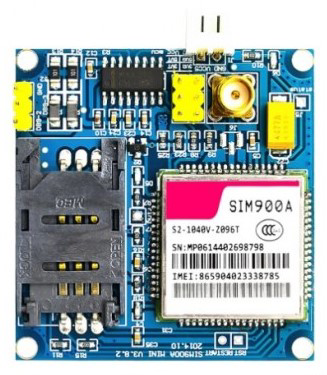
 Design with SIM900A gsm mosule 01 in Cirkit Designer
Design with SIM900A gsm mosule 01 in Cirkit DesignerIntroduction
The SIM900A GSM Module is a compact and reliable GSM/GPRS module designed for communication over mobile networks. It enables devices to send and receive SMS, make voice calls, and connect to the internet using GPRS. This module is widely used in IoT applications, remote monitoring systems, and embedded projects requiring wireless communication.
Explore Projects Built with SIM900A gsm mosule 01
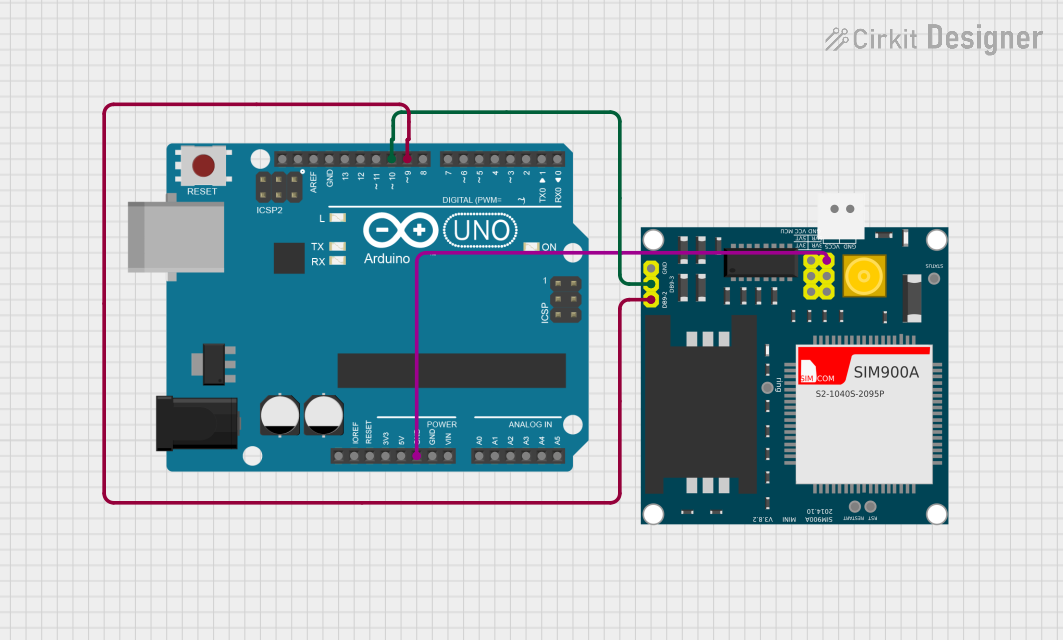
 Open Project in Cirkit Designer
Open Project in Cirkit Designer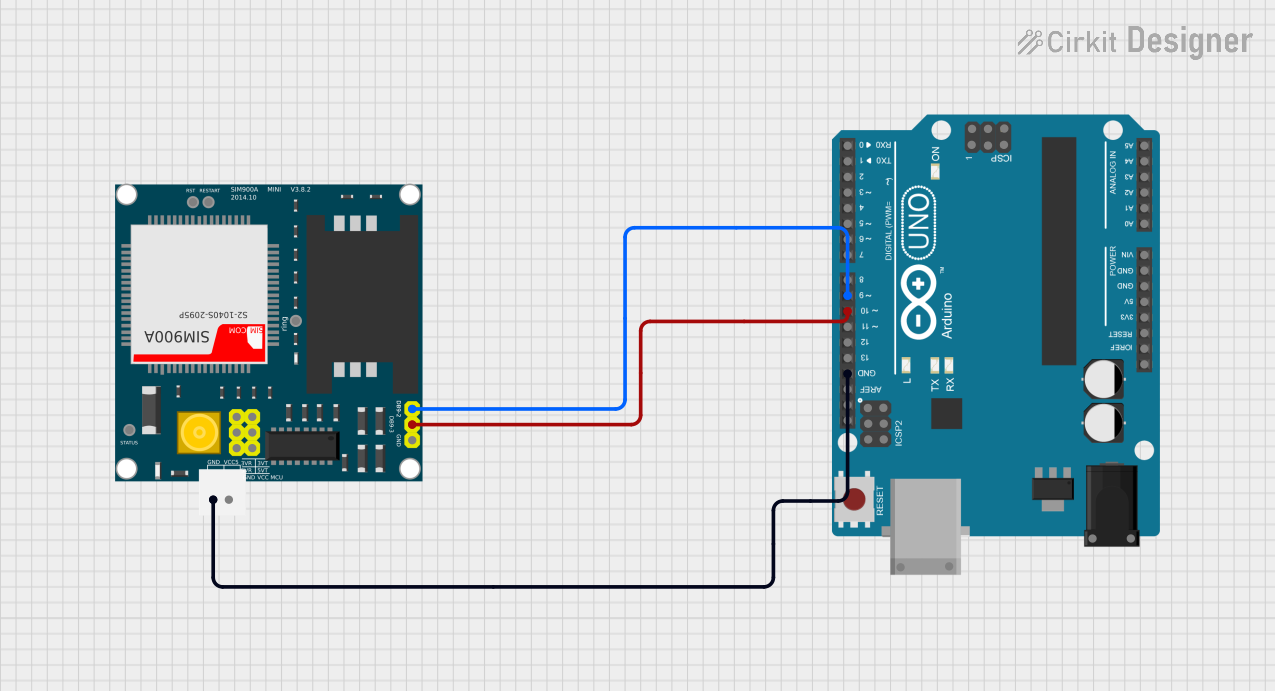
 Open Project in Cirkit Designer
Open Project in Cirkit Designer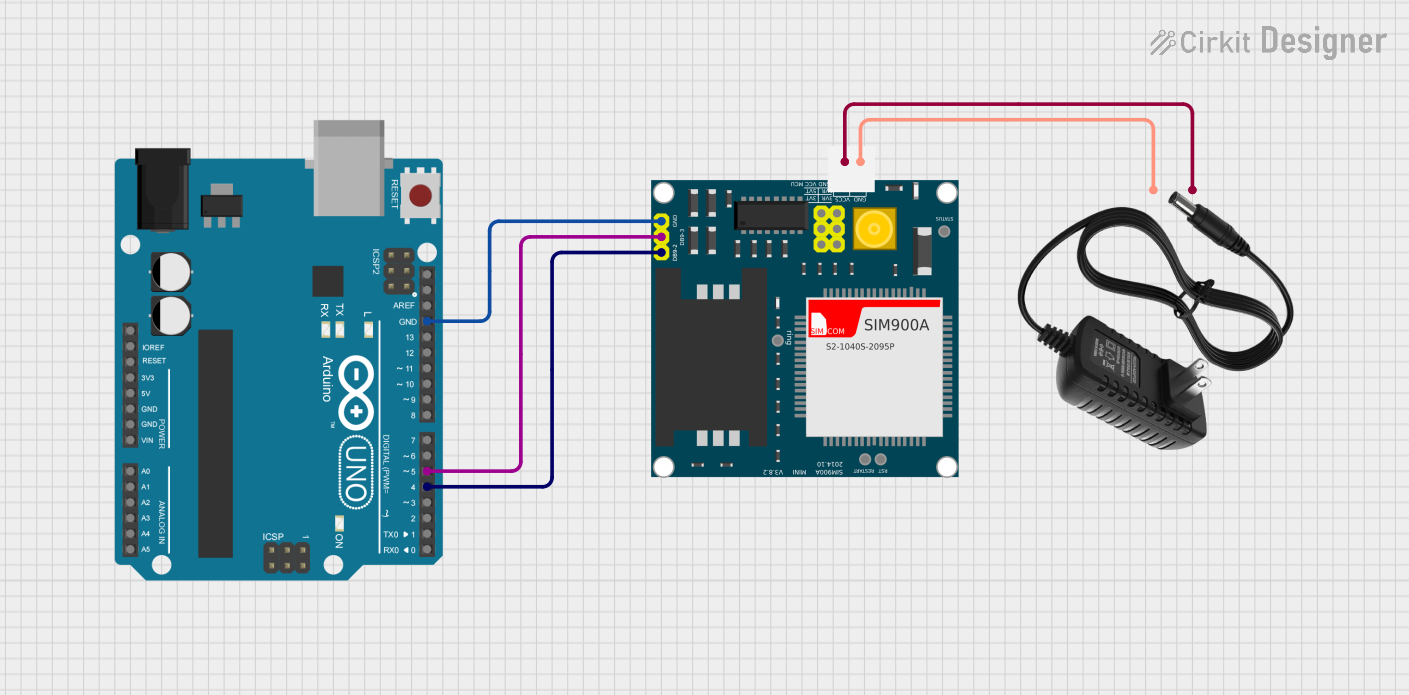
 Open Project in Cirkit Designer
Open Project in Cirkit Designer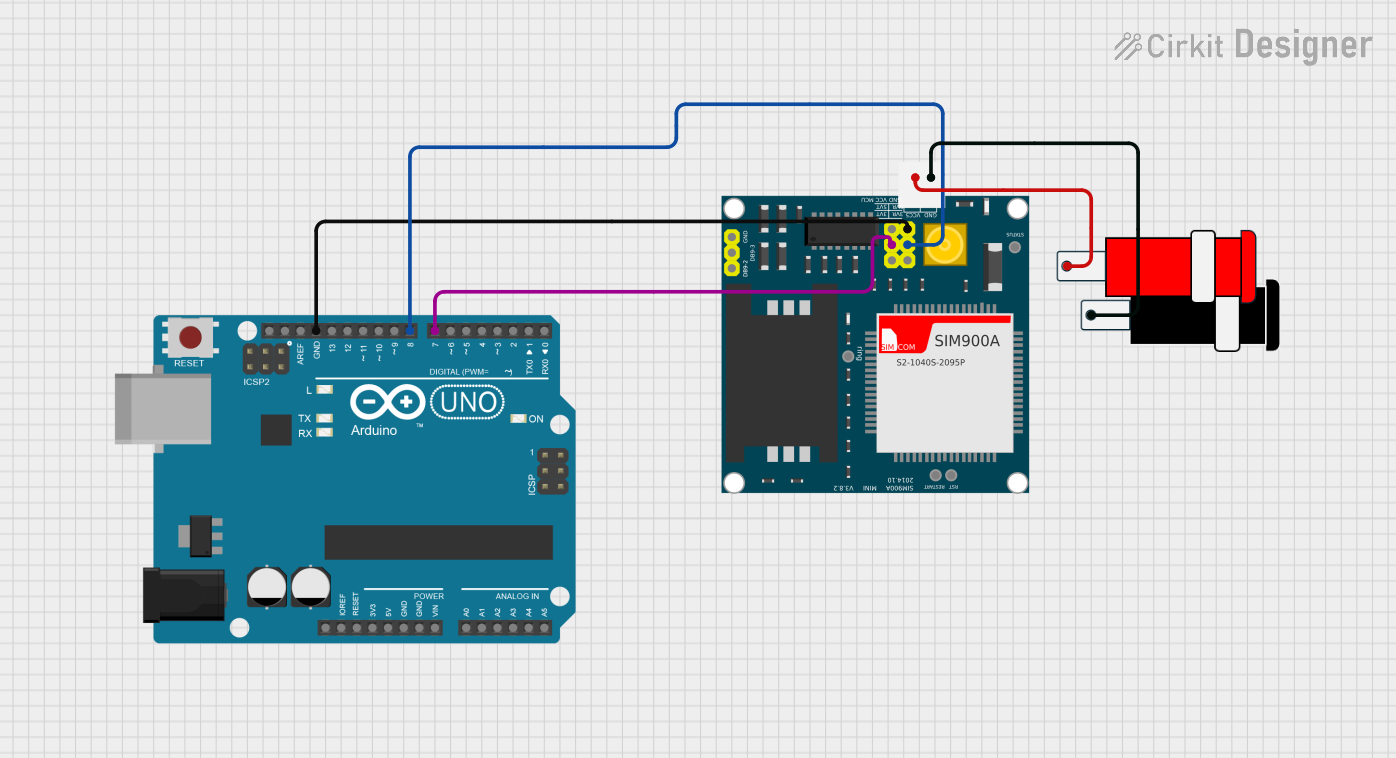
 Open Project in Cirkit Designer
Open Project in Cirkit DesignerExplore Projects Built with SIM900A gsm mosule 01

 Open Project in Cirkit Designer
Open Project in Cirkit Designer
 Open Project in Cirkit Designer
Open Project in Cirkit Designer
 Open Project in Cirkit Designer
Open Project in Cirkit Designer
 Open Project in Cirkit Designer
Open Project in Cirkit DesignerCommon Applications and Use Cases
- IoT devices for remote monitoring and control
- SMS-based alert systems
- Voice call-enabled embedded systems
- GPRS-based internet connectivity for data transmission
- Home automation and security systems
- Vehicle tracking and fleet management
Technical Specifications
The SIM900A GSM Module is designed to operate efficiently in a variety of environments. Below are its key technical details:
Key Technical Details
| Parameter | Specification |
|---|---|
| Operating Voltage | 3.2V to 4.8V (Typical: 4.0V) |
| Operating Current | Idle: ~20mA, Max: ~2A (during TX burst) |
| Frequency Bands | Dual-band GSM 900/1800 MHz |
| Communication Interface | UART (3.3V TTL logic) |
| GPRS Connectivity | Class 10 |
| SMS Support | Text and PDU modes |
| Voice Call Support | Full-duplex |
| Dimensions | 24mm x 24mm x 3mm |
| Operating Temperature | -40°C to +85°C |
Pin Configuration and Descriptions
The SIM900A module typically comes with a breakout board for easier interfacing. Below is the pin configuration:
| Pin Name | Pin Number | Description |
|---|---|---|
| VCC | 1 | Power supply input (3.2V to 4.8V) |
| GND | 2 | Ground |
| TXD | 3 | UART Transmit (3.3V TTL logic) |
| RXD | 4 | UART Receive (3.3V TTL logic) |
| DTR | 5 | Sleep mode control (optional) |
| RST | 6 | Reset pin (active low) |
| MIC+ | 7 | Microphone positive input |
| MIC- | 8 | Microphone negative input |
| SPK+ | 9 | Speaker positive output |
| SPK- | 10 | Speaker negative output |
| ANT | - | Antenna connector for GSM signal |
Usage Instructions
How to Use the SIM900A in a Circuit
- Power Supply: Ensure a stable power supply of 4.0V (typical). Use a capacitor (e.g., 1000µF) near the module to handle current surges during transmission.
- Antenna Connection: Connect a GSM antenna to the ANT port for proper signal reception.
- UART Communication: Connect the TXD and RXD pins to a microcontroller or USB-to-TTL converter for communication. Use a level shifter if your microcontroller operates at 5V logic.
- SIM Card: Insert a valid SIM card into the SIM slot.
- Initialization: Use AT commands to configure the module and establish communication.
Important Considerations and Best Practices
- Power Supply: The module can draw up to 2A during transmission bursts. Ensure your power source can handle this.
- Signal Strength: Place the antenna in an open area for better signal reception.
- UART Logic Levels: The module operates at 3.3V logic. Use a level shifter if interfacing with 5V systems.
- AT Commands: Familiarize yourself with AT commands for sending SMS, making calls, and using GPRS.
Example: Connecting to an Arduino UNO
Below is an example of how to send an SMS using the SIM900A module with an Arduino UNO:
#include <SoftwareSerial.h>
// Define RX and TX pins for SoftwareSerial
SoftwareSerial SIM900A(7, 8); // RX = Pin 7, TX = Pin 8
void setup() {
Serial.begin(9600); // Initialize Serial Monitor
SIM900A.begin(9600); // Initialize SIM900A module
delay(1000); // Allow module to stabilize
// Send AT command to check communication
SIM900A.println("AT");
delay(1000);
if (SIM900A.available()) {
Serial.println("SIM900A is ready!");
} else {
Serial.println("No response from SIM900A.");
}
// Send SMS
SIM900A.println("AT+CMGF=1"); // Set SMS mode to text
delay(1000);
SIM900A.println("AT+CMGS=\"+1234567890\""); // Replace with recipient's number
delay(1000);
SIM900A.println("Hello, this is a test SMS from SIM900A!"); // SMS content
delay(1000);
SIM900A.write(26); // Send Ctrl+Z to send the SMS
delay(5000);
}
void loop() {
// No actions in loop
}
Troubleshooting and FAQs
Common Issues and Solutions
No Response from the Module
- Cause: Incorrect power supply or loose connections.
- Solution: Ensure a stable 4.0V power supply and check all connections.
SIM Card Not Detected
- Cause: Improper SIM card insertion or unsupported SIM.
- Solution: Reinsert the SIM card and ensure it is unlocked and supports GSM.
Weak Signal or No Network
- Cause: Poor antenna placement or weak GSM coverage.
- Solution: Relocate the antenna to an open area or check network coverage.
AT Commands Not Working
- Cause: Incorrect UART connection or baud rate mismatch.
- Solution: Verify TXD and RXD connections and ensure the baud rate is set to 9600.
FAQs
Can the SIM900A work with 5V logic?
- No, the SIM900A operates at 3.3V logic. Use a level shifter for 5V systems.
What is the maximum SMS length supported?
- The module supports up to 160 characters in text mode.
Can I use the SIM900A for internet browsing?
- Yes, the module supports GPRS for basic internet connectivity.
How do I reset the module?
- Pull the RST pin low for at least 100ms to reset the module.
By following this documentation, you can effectively integrate the SIM900A GSM Module into your projects and troubleshoot common issues.